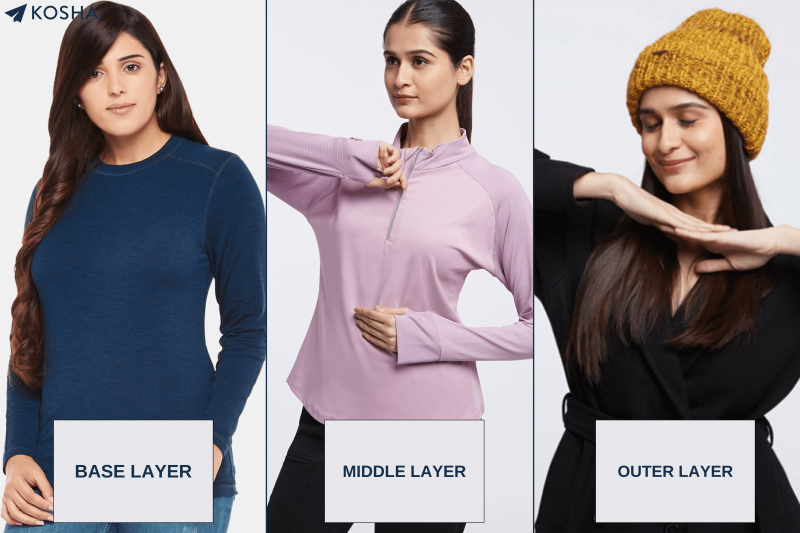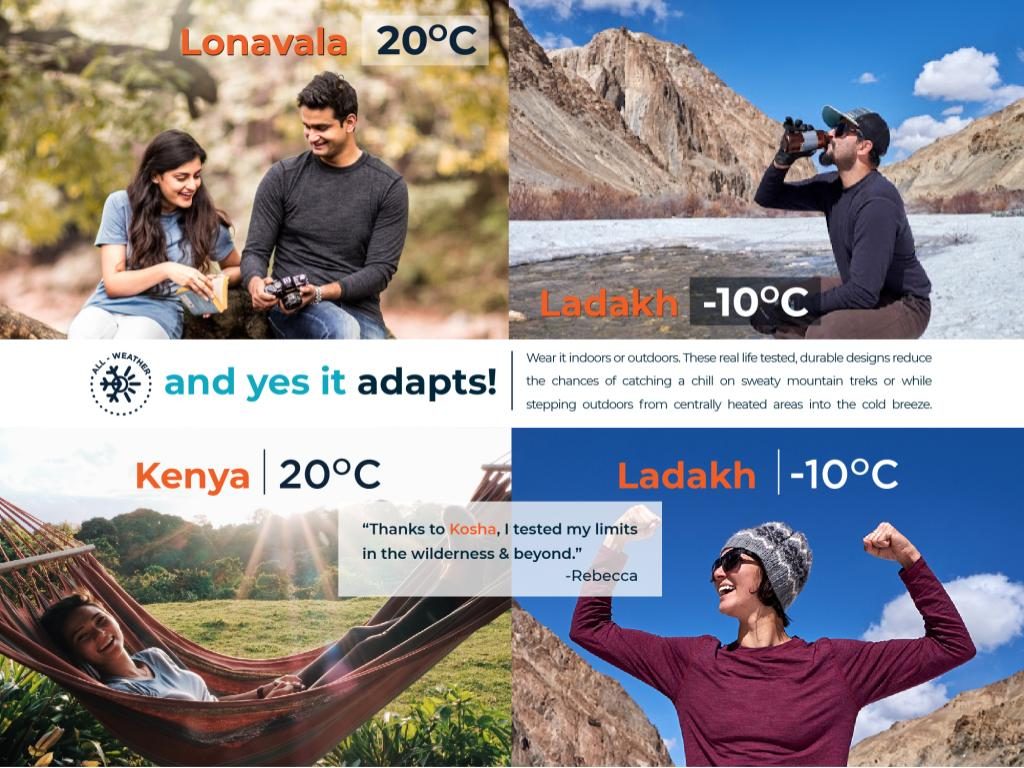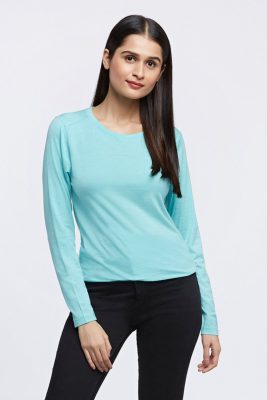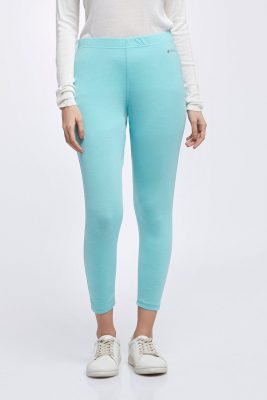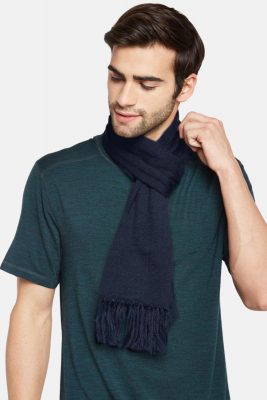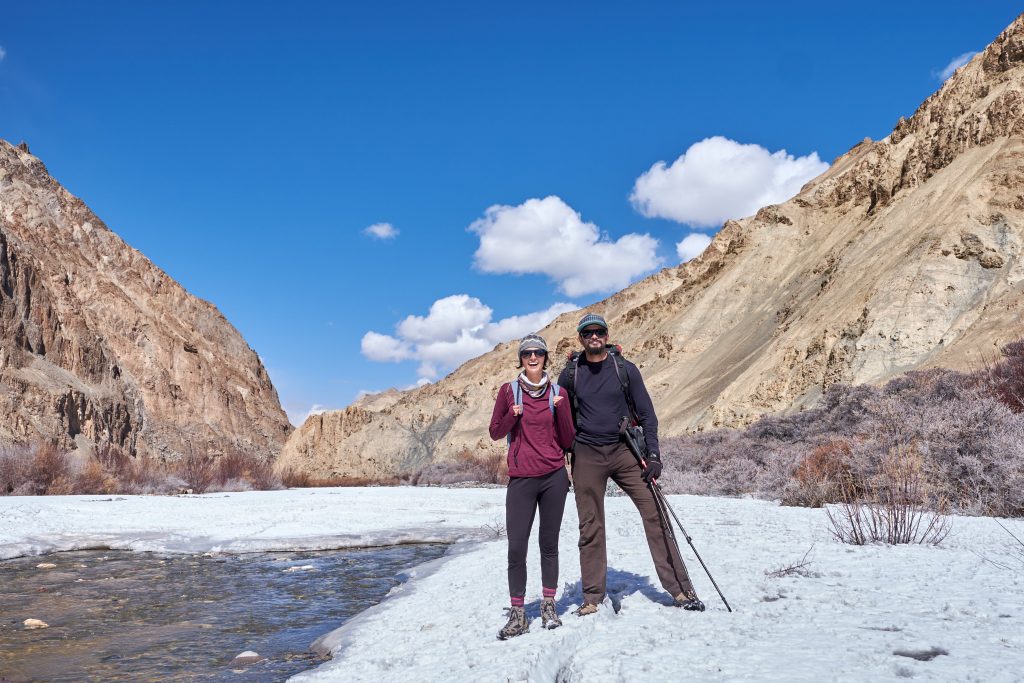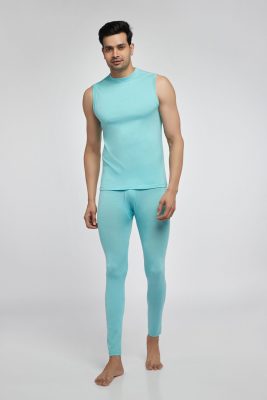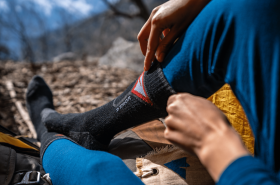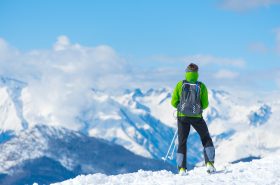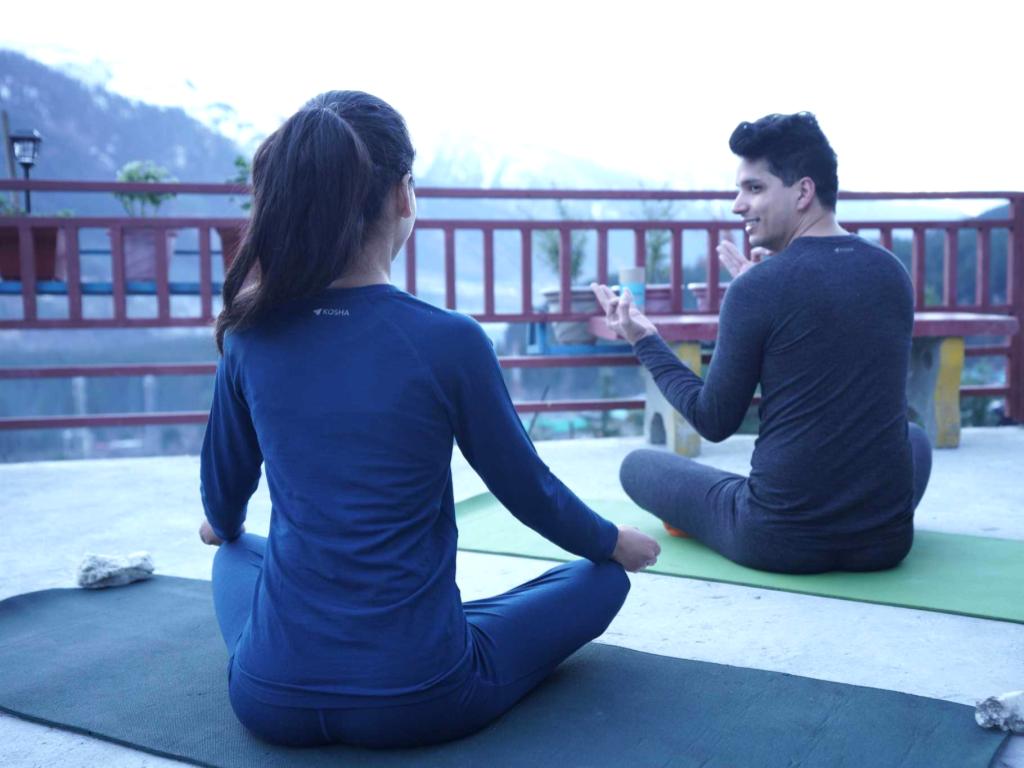
A good base layer is like a warm hug from the inside. It’s the secret to staying cozy when the temperatures drop.
Wondering what is a base layer, different types of it, and how it helps you when walking and hiking in cold temperatures, then keep on reading!
Your first snow is always special. There is something about being able to watch the sunlight reflecting from the snowflakes and the purity of white just surrounding you everywhere.
Especially if you come from a place that experiences a tropical climate, it is even more special. But there is one disadvantage to it. Since it is the first time, you are not sure how to dress for the occasion. You just know that you need to be warm. So what do you do?
Check out Kosha’s technical wear here
The obvious, huh? You google. You google how to dress for winter or snow. You get so many options. But there is this one piece of clothing that stands out everywhere- the base layer. The word seems interesting, but exactly what is a base layer? It shows thermals in some base layers in others, long johns in some other places, and it goes on.
This is what happens when you are new to the winter layering system and you decide to research it. There are too many names and contexts for the base layer. So to make things easy and simple for you, in this article, we are going to take you through everything you need to know about base layers.
Table of Contents
What is Base Layer Clothing?
Base layer clothing as the word suggests is a piece of clothing that you wear at the beginning of your winter layering. This cloth is worn under your regular clothes and over your undergarments.
They are worn to keep your body warm and dry. You need to wear base layers if the temperature is below 10 degrees Celsius to protect your body from the cold.
Imagine being in a sub-zero temperature with your regular clothes and jackets to protect you from the external environment. When you forego the base layer, then nothing is standing between your body and your normal clothes.
Winter’s bite is no match for a well-chosen base layer. It’s the armor that shields you from the elements.
Sometimes all the layers that you use to keep yourself warm will eventually lead to sweating in your body. This makes your regular clothes wet. Now when I say your clothes would be wet, do remember that you would also be wearing other layers over your wet cloth to keep you warm. So, instead of feeling warm, you will end up feeling colder and the wet cloth clinging to your body will make you shiver.
If worn for a longer period you can even end up having hypothermia. In order to avoid all these, it is always advisable to wear a base layer before you start adding your mid-layers (hoodie/sweater/sweatshirts) or outer layers (jackets/coats).
As you might already understand from the above context, a good base layer is the one that can keep you warm and dry throughout. It should be most importantly rapidly dry as you don’t need your base layer to be wet. It’s not just the cold that is a result of a wet base layer.
It will also lead to you getting irritation on your skin with the sweat and dirt clinging to the wet fabric. Bad odor can be another effect of a wet base layer. So, it is very important to be choosy while getting your base layer as it is literally the base of your layering. Only if the base is strong will the other layers protect you.
Base layer vs thermal clothing. Is there a difference?
Even though the names base layer and thermals are used interchangeably very often, there is a slight difference between base layer garments and thermal layers. While both base layers and thermals do the work of protecting your body from cold and keeping it dry, one is more specialized in the latter than the other.
The main duty of the base layer is to keep your body dry whereas the main duty of thermal clothing is to keep your body warm. They are born worn beneath your regular clothing to keep you comfortable.
Even though there is this distinction, now thanks to the technological advancement in the textile industry, most thermals have the quick-dry capability and most base layers have inbuilt thermal properties. This can be why when you search for a base layer you often get results around thermal wear and vice versa. So, now you know!
What are Base Layers Made From?
You cannot complete the answer to the question of what is a base layer, without answering what base layers are made of. Even though there is much fabric available out there in the market for base layers, the major players for base layers are synthetic and merino wool.
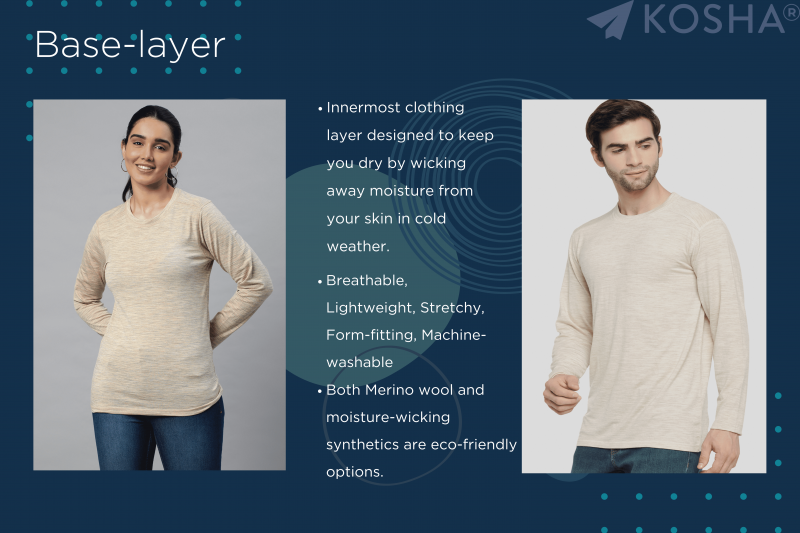
Synthetic Base Layers
Synthetic or man-made base layers are the ones that are made from artificial fibers. Nylon and polyester are two favorites when it comes to synthetic base layers. They are easily available, have a good wicking capacity, and last much longer than any natural fibers. Due to their ready availability, they are also less expensive than merino wool base layers.
Since these base layers are designed by humankind, we have added properties like breathability and rapid dryness. The thickness of these base layers is completely dependent on the materials used to make them and cannot be commented on in general.
One disadvantage of the synthetic base layers is that they are not biodegradable. In order to ensure durability, they are often made of materials that take years to disintegrate and can harm the planet.
Another disadvantage of the synthetic base layer is that even though they have the quick moisture-wicking capability they cannot be worn for long as they produce a foul smell. Synthetic base layers can help you for moderately warm climates but when it comes to cold or snowy weather, it is always advised to go for merino wool base layers.
Merino Wool Base Layers
Merino wool base layers are natural biodegradable base layers made from merino wool. Merino wool is a fabric obtained from the merino sheep found in the Australian region. The fibers of merino wool are extremely light with a fiber dimension of fewer than 24 microns.
They are super fine and have large pockets for trapping air. This way they provide warmth and comfort automatically. The natural temperature-regulating property of merino wool fibers is another reason why they are so popular as base layers.
Merino wool is also naturally antibacterial, unlike synthetic material.
Antibacterial properties help the fabric to remain fresh and odor-free even after long usage, which makes merino wool base layers perfect for camping and trekking activities.
They are breathable and would keep you warm and dry.
One drawback of merino wool thermals is that, due to the exclusivity of merino wool fibers, they are not readily available and hence more expensive than your regular synthetic base layers.
Read more: Socks guide- Definite buying guide for comfort and style
What is Kosha Base Layers made of?
“Due to the variance in altitude and weather conditions during the hikes or the jumps, it’s highly important to have the right kind of layers, especially the base layer. Some properties critical to a good base layer are sweat-wicking properties, breathability, and of course to be able to keep the body warm, which is the primary purpose.
Also since you spend days or weeks at a stretch in the mountains it’s at times difficult to wash the base layer during such expeditions, hence it needs to stay dry and fresh. These are reasons why I truly love the Kosha Merino Wool Bamboo thermals which I’ve tried and tested during my various exploits.” – This is what Sajid Chougle, lover of mountains, adventure seeker, and a regular hiker has to say about Kosha’s base layers.
When Kosha decided to introduce the base layer collection, there was a clear aim to bring in the combination of base layers and thermals. The motto behind Kosha’s base layer is to keep you warm, dry, and comfortable.
Kosha also has a strong ethos on sustainability which clearly guided them away from the path of synthetic fabrics. Even though merino wool thermals are great, the Kosha team wanted to further enhance the properties of the base layer and hence found a unique combination.
Kosha base layers are formed by mixing 47.5% of bamboo with 47.5% of merino wool. This fabulous combination helped the base layers have all the goodness of merino wool and the features of bamboo that includes soothing texture, and better durability.
The Kosha base layers were also created with keeping travelers’ comfort in mind. Apart from being temperature regulating, Kosha base layers can also be doubled up as a T-shirt.
Knowing how difficult it is to travel in bulky layers, the Kosha base layers are extremely lightweight and when you are indoor or warm, you can remove your outer layers and use the same thermals as Tees. The fact that they come in different colors supports this fact.
What are the types of Base Layers?
As base layers are used to keep your body warm and body temperature in check, it is important to wear base layers that cover your chest and bottom. For the same, there are base layer sets that you can wear underneath your clothes.
Basically, a base layer can be a base layer top or base layer bottoms. You can also always use accessories to cover your extremities.
Base Layer Tops
As the name suggests base layer tops are used to cover the top half of your body. It can either be a full sleeve, half sleeve, or sleeveless depending on your body’s temperature capability. Always invest in a merino wool base layer as it will keep you warm and sweat free throughout the trip.
Aqua Merino-Bamboo Full Sleeve Thermal Tee | Women
You can check out Kosha’s base layer tops for men here.
Base Layer Bottoms
Base layer bottom or thermal leggings are the base layer worn underneath your pants to protect the lower half of your body. They are usually full size and end above your ankle.
Aqua Merino Wool & Bamboo Thermal Leggings | Women
You can view Kosha’s base layer bottoms for men here.
Accessories
Another layer that helps you keep your body safe is accessories. Even though people often neglect investing in good accessories, it is extremely important to have quality accessories.
Accessories include your gloves, socks, scarves, mufflers, or beanies – basically anything that can be used to protect your extremities from the harsh weather.
Classic Black Plain Tassel Merino Wool Muffler | Men
When you are getting gloves, try to go for waterproof ones if you are going to experience snow. Or touch screen gloves if it is for regular use.
With mufflers and scarves, go for a woolen or wool mix as it will keep your neck warm.
You can take it a step further and invest in a good balaclava if the climate is really cold. This will then ensure that your ears, neck, and head are covered. Plus get beanies as they protect your head, and keep it warm.
For socks, make sure that they are breathable and have cushioned support if you are planning on engaging in adventure activities.
You can check out Kosha’s accessories for men here.
You can check out Kosha’s accessories for women here.
Are base layers waterproof?
No, base layers are not waterproof. They cannot be worn as outerwear in the snow or rain because you will get wet. What base layers are is hydrophobic. It implies that a good base layer would always repel water and will lead to rapid drying.
The merino wool fabric has inherent hydrophobic properties as well as moisture absorption properties. So they absorb sweat and wetness from your body extremely quickly and at the same time, the hydrophobic nature lets the fabric dry up just as easily. This makes it a perfect choice for the base layer and more sought after compared to other products in the market.
When should base layers be worn?
Base layers are ideally worn when the temperature goes below 15 degrees celsius as this is when our body temperature cools down and we need extra protection from warmth.
As the temperature goes further down more layers can be added in the form of hoodies or jackets. If your travel involves snow, rain, or wind, then it is always advisable to include a hardshell jacket in your layering attire as you would need water resistance from them.
Baselayers would ideally be used in the winter as the temperature drops and your body starts to feel cold. From 15 degrees celsius to 10 degrees Celsius you can use your regular cotton thermal or baselayer.
When the temperature goes below 10 degrees celsius, you would require a wool blend base layer as it would need to keep you warmer than the regular cotton. Any temperature below 5 degrees celsius would require you to use a merino wool base layer as it can keep you warm and dry at the same time.
Depending on the activities you choose when you are traveling the base layer usage also varies. If you are someone who is planning on taking a hike to one of the mountains, it is always good to have a base layer worn even if the temperature is above 15 degrees celsius.
The reason is that, as you climb up a mountain, the temperature drops significantly and you start feeling cold. Also as you are releasing energy for the activity you would be sweating a lot which implies you need clothes that have rapid moisture wicking properties.
Another example when you need to wear a base layer irrespective of the temperature is when you are camping in a desert. Deserts have an extreme temperament and get pretty hot and cold fast.
During the daytime, it can be scorching hot but in the evening, it can cool down below 10 degrees celsius. So if you wear a base layer before you go to sleep it will help regulate the temperature automatically and help you get a good sleep throughout the night.
Bae layers with the right material can also regulate body heat and wick moisture.
How are base layers supposed to fit?
Last, but not least, the fitting of a base layer has always been one of the most sought after questions. Some people think it is always better to have a loose base layer as it will give enough space for air circulation and helps your body breathe. But this is not the actual scenario.
Aqua Merino-Bamboo Sleeveless Thermal Set|Men
Base layers need to be a snug fit. It should be very close to your body like a second skin without being too tight. The entire purpose of the base layer is to absorb moisture from your body and keep it fresh. It also helps to keep your skin dry (as long as you are using a breathable material for your base layer).
If you are wearing a base layer that is not close to your body then this purpose is defeated. This would also cause your body to feel cold as there is enough space for air circulation without the air getting trapped.
A good base layer is one that has a snug fit, is smooth on your skin, is lightweight, is temperature regulating, and has a rapid dry technology.
FAQ’s
Q: What is a base layer?
A: A base layer is a tight-fitting garment that is worn closest to the skin. It is designed to wick sweat away from the body and keep you warm and dry.
Q: What are the benefits of wearing a base layer?
A: Base layers offer a number of benefits, including:
- Wicking sweat away from the body
- Trapping heat
- Regulating body temperature
- Preventing chafing
- Providing a layer of insulation
Q: What are the different types of base layers?
A: Base layers are made from a variety of materials, including wool, synthetic fabrics, and blends. The type of base layer you choose will depend on your activity level and the weather conditions.
Q: When should I wear a base layer?
A: Base layers can be worn for a variety of activities, including hiking, skiing, snowboarding, running, and working out. They can also be worn for everyday activities in cold weather.
Q: How do I care for a base layer?
A: Most base layers can be machine-washed and dried. However, it is important to check the care label on your base layer for specific instructions.
Conclusion
In conclusion, a base layer guide is a valuable resource that provides essential information on selecting, wearing, and caring for base layers in various outdoor activities and climates. Base layers play a crucial role in regulating body temperature, moisture management, and overall comfort, making them a fundamental part of any layering system.
Understanding how to choose the right material, thickness, and fit for your specific needs is key to enjoying a comfortable and successful outdoor experience. Whether you’re hiking, skiing, or engaging in other outdoor pursuits, a well-informed base layer guide can help you make informed decisions to enhance your performance and comfort.
Now that you know all about the base layers would you like to know more about other layers and the winter layering system? Check out Kosha to know more about the layers. You can also purchase your favorite styles from here.
